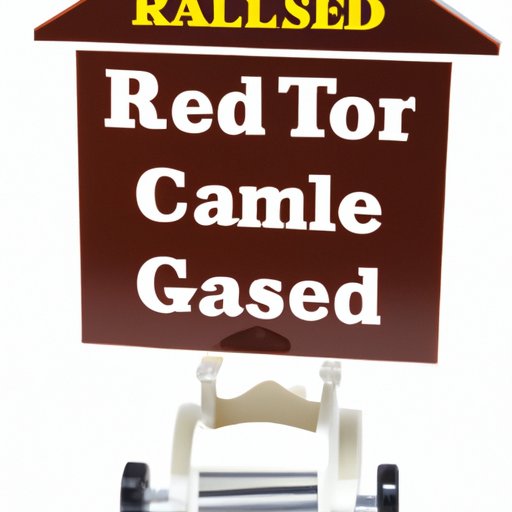Introduction
If you’ve built your own car at home in Texas, congratulations! But now comes the important task of registering it legally. Registering a home-built car in Texas can be a bit of a challenge, but nothing that can’t be overcome. In this article, we’ll provide you with a step-by-step guide and all the information you’ll need to register a custom car in the state of Texas.
A Step-by-Step Guide to Registering a Home Built Car in Texas
The general process of registering a home-built car in Texas involves several steps, including vehicle inspection, obtaining proof of ownership, paying the registration fees, and getting the necessary documents. Here’s a detailed breakdown of what you need to do.
Step 1: Finalize Your Vehicle
Before you can begin the registration process, you need to ensure that your custom car meets all the requirements defined by the DMV. These include a working VIN, a brake inspection, certification of emissions from the Texas Department of Public Safety (DPS), and a completed 130-U form. Make sure the vehicle’s paperwork is updated and you have all the required documentation.
Step 2: Obtain a Vehicle Inspection Certificate
To obtain a vehicle inspection certificate, you must take your car to an auto inspection station and have it inspected. The safety and emissions inspection tests include checking lights, brakes, horn, and other mechanical systems. Once you pass the inspection, you’ll receive a Vehicle Inspection Report (VIR) which you will present to the DMV as proof of your vehicle’s road-worthiness.
Step 3: Get Proof of Ownership
You will need to obtain proof of ownership for the vehicle. This includes proof that the car has not been stolen and proof of sale or donation, if applicable. You can apply for a title, registration, and license plates through the Texas DMV’s website or by visiting your local DMV office. If you purchased the vehicle from another state or bought it as a kit car, you will need to follow a different process.
Step 4: Pay the Registration Fees
Once you have all the required documentation, you’ll have to pay the registration fees. The amount varies depending on the weight of your vehicle, so be sure to check the DMV website for the current fee schedules.
Step 5: Get the Necessary Documents
Once you’ve paid the registration fees, you’ll receive your license plates and registration certificate in the mail. You’ll need to keep the registration certificate in your vehicle at all times.
Avoiding Common Pitfalls: Registering Your Custom-Built Car in Texas
Registering a home-built car in Texas can be a bit of a challenge if you don’t know what to do. Common issues include incorrect paperwork submission, eligibility requirements, and incomplete emissions tests. To avoid these pitfalls, make sure you follow the Texas DMV’s guidelines carefully and have a clear understanding of the process.
Everything You Need to Know About Registering a Home Built Car in Texas
Comprehensive information on the steps, documents, and requirements for registering a custom car in Texas is available on the DMV website. Review all the available information on the DMV website to ensure that you have everything you need before you begin the process.
Special Cases and Exceptions
There may be additional requirements or exceptions depending on your situation. For example, if you’re importing a car or building something very unique, it’s best to consult with a professional who can provide tailored advice. You can also reach out to the DMV directly for assistance.
Navigating the Paperwork: Registering Your DIY Car in Texas
Paperwork is an essential part of the registration process, so it’s important to gather and complete all of the necessary documents correctly. These include the title, receipt or bill of sale for parts, VIN verification, and the emissions test report. Read the instructions carefully and make sure you have everything you need before submitting your paperwork. This can save you a lot of time and hassle in the long run.
How to Register Your Hand-Built Car in Texas: Tips and Tricks
Additional tips for successfully registering a custom car in Texas include starting the process early, gathering all the necessary documents and receipts, and double-checking all documentation before submitting it. Other things to consider include reaching out to local hot rod groups, expertise from local mechanics, and seeking out forums and online communities of custom car builders for possible support with the process.
Breaking Down the Process: Registering a Custom Car in Texas
With so many steps involved, the process of registering a custom car in Texas can seem daunting. Here’s a quick summary of all the steps.
Step 1: Finalize Your Vehicle
Make sure your vehicle meets all the criteria to obtain registration.
Step 2: Obtain a Vehicle Inspection Certificate
Take your car to an inspection station to obtain a VIR.
Step 3: Get Proof of Ownership
Obtain proof of ownership for your vehicle if required.
Step 4: Pay the Registration Fees
Pay the registration fees.
Step 5: Get the Necessary Documents
Receive your license plates and registration certificate in the mail.
Conclusion
Registering a home-built car in Texas may seem overwhelming at first, but with careful preparation and attention to detail, it is a task that you can complete successfully. Remember, the process requires patience, perseverance, and a little bit of knowledge, so be sure to review all the information available on the DMV website and consult with professionals and other builders as needed.
(Note: Is this article not meeting your expectations? Do you have knowledge or insights to share? Unlock new opportunities and expand your reach by joining our authors team. Click Registration to join us and share your expertise with our readers.)
